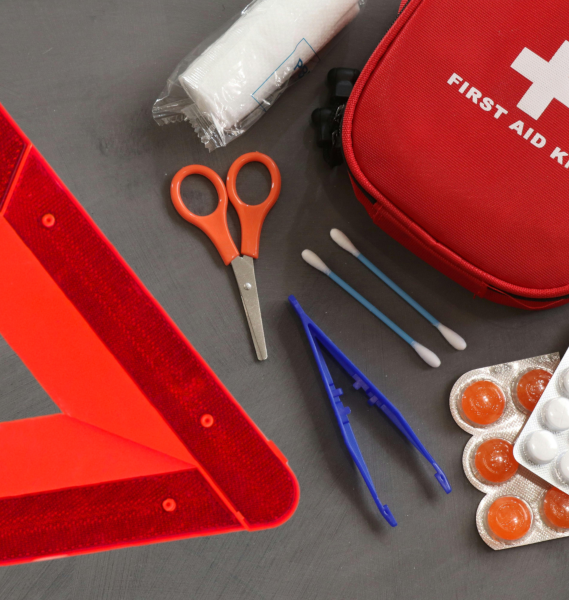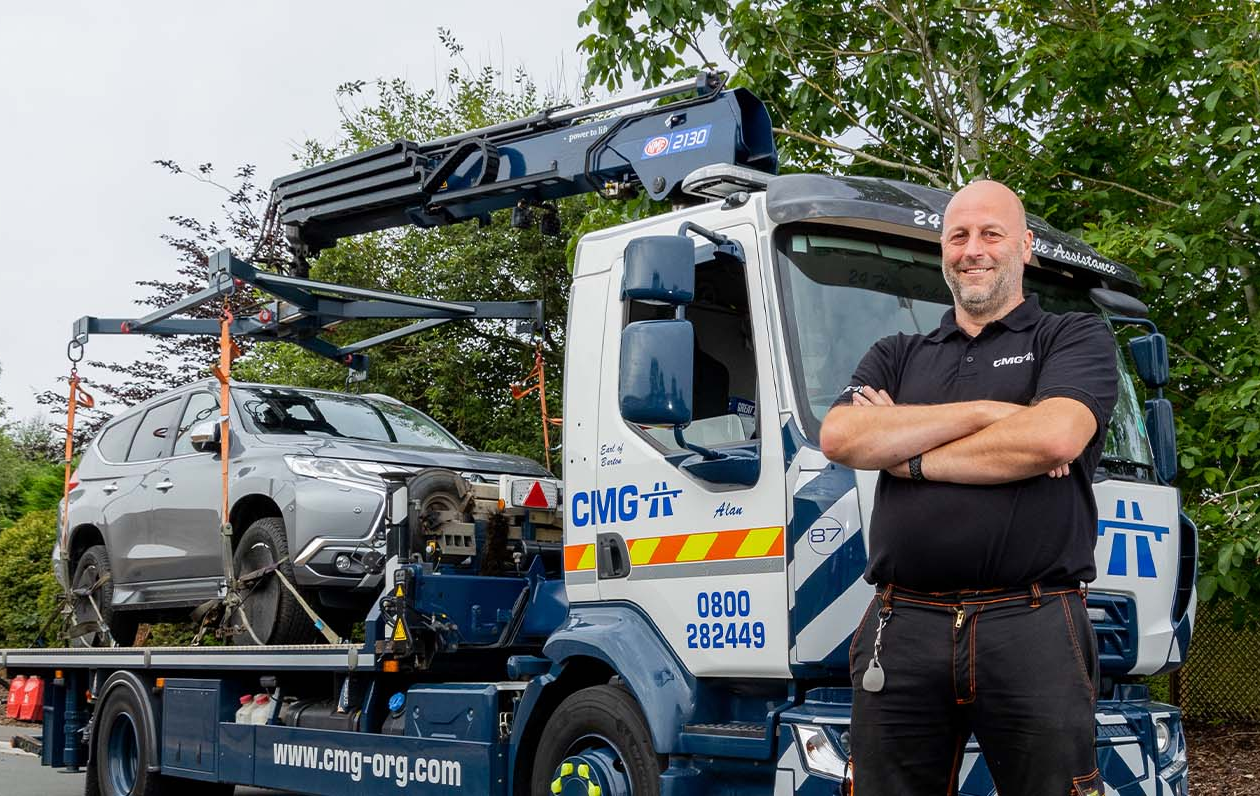Personal Safety First: Essential Guidelines for Vehicle Recovery
Imagine cruising down the motorway on a sunny day when suddenly, your vehicle breaks down. Panic sets in as you're stranded, vulnerable, and unsure of what to do next. This scenario is more common than you'd think, and knowing how to handle it safely is crucial. Vehicle recovery isn't just about getting your car back on the road; it's about putting personal safety first. Whether you're a driver, mechanic, or towing professional, understanding the essentials of vehicle recovery can mean the difference between a safe rescue and a dangerous mishap.
Have you ever considered what steps you would take if your vehicle broke down on a deserted road at night?
Understanding the Importance of Personal Safety During Vehicle Recovery
When a vehicle breaks down on the side of the road, it creates a potentially hazardous situation for everyone involved. Roadside incidents pose significant safety risks, not just to the driver and passengers, but also to other road users and recovery professionals. In these scenarios, personal safety must take precedence over vehicle concerns. After all, cars can be repaired or replaced, but lives cannot.
Implementing proper safety measures can prevent injuries and even save lives during recovery. For instance, staying aware of your surroundings and potential hazards can significantly enhance the safety of the recovery process. This includes understanding the dangers posed by passing traffic, poor weather conditions, and the mechanical state of your vehicle.
Comprehensive safety training equips individuals with essential protective skills needed during such incidents. For drivers and passengers, this means knowing how to safely exit the vehicle, position themselves away from traffic, and use safety equipment like warning triangles and high-visibility vests. In contrast, professionals need to be trained in efficient and safe recovery techniques, ensuring that everyone involved is protected.

By prioritising personal safety and adhering to safety guidelines during vehicle recovery, you can minimise risks and handle vehicle recovery operations with confidence and competence. Knowledge, preparation, and caution are your best allies in maintaining safety on the road.
Assessing the Situation: When to Call for Professional Assistance
Sometimes, handling a vehicle breakdown on your own isn't the best course of action. Recognising when to call for professional assistance is a crucial decision that can prevent further complications and dangers. Complex recovery situations often require the expertise of trained professionals who have the skills and equipment to manage them safely.
Severe weather or challenging terrain can make vehicle recovery difficult and dangerous. If you're facing strong winds, icy roads, or steep inclines, it might be wise to call in the experts. Similarly, a lack of appropriate equipment can be a telltale sign that you need help. Recovery professionals have access to specialised tools and vehicles designed to tackle these scenarios efficiently.
In some cases, immediate assistance is crucial when personal safety is at risk. For example, if your vehicle is stuck in an unsafe location or you've been involved in an accident, reaching out to emergency services or roadside assistance can provide the support you need. Professionals ensure the safe and efficient recovery of vehicles in such challenging scenarios.
By understanding the importance of calling for help, you can avoid unnecessary risks and complications. Roadside assistance services aren't just about getting your car back on the road; they're about providing the expertise and resources needed to ensure everyone's safety.
Essential Safety Tips for Drivers and Passengers
If you find yourself stranded on the side of a busy road, knowing how to stay safe is vital. In an emergency, knowing what to do can make all the difference. Start by turning on your hazard lights to alert other drivers to your vehicle's presence. This is the first step in creating a safer recovery environment and is crucial in poor visibility conditions.
Next, setting up warning triangles a good distance from your vehicle can further enhance safety. These visible markers give other drivers ample warning of your presence, allowing them time to react and pass safely.
Wearing high-visibility clothing is one of the simplest yet most effective ways to increase your safety during roadside recovery. This ensures that other drivers can see you clearly, especially in low-light conditions.
When exiting the vehicle, do so with caution. Open the door away from passing traffic and ensure that you and your passengers exit on the side facing away from the road. This simple action can significantly reduce the risk of injury from passing vehicles. Once out, maintain a safe distance from the roadway to enhance personal security.
Having emergency contact information readily accessible can also be a lifesaver. Whether it's a phone number for roadside assistance or an emergency contact, having these details at your fingertips ensures you can call for help quickly and efficiently.
Staying calm and composed is another crucial safety tip. In emergencies, panic can lead to poor decision-making. By keeping a level head, you can assess the situation more clearly and take the necessary steps to ensure your safety and that of your passengers.
Key Safety Equipment Every Vehicle Should Have
To be prepared for any roadside emergency, it's essential to have the right safety equipment in your vehicle. A first aid kit is a must-have, providing essential medical supplies to treat minor injuries until professional help arrives. It's a small investment that can make a big difference in an emergency.
Warning triangles and cones are another critical component of your emergency kit. These items enhance your visibility to other drivers, reducing the risk of accidents during a breakdown. A high-visibility vest also increases personal safety by making you more visible to oncoming traffic.
A basic tool kit is invaluable for minor vehicle repairs during recovery. Even if you're not a mechanic, having tools on hand can help with simple fixes or adjustments until professional help arrives. And of course, a charged mobile phone is essential for reliable communication in emergencies.

Tips for Effective Communication with Recovery Professionals
When you call for roadside assistance, effective communication is key to getting the help you need quickly. Start by providing clear and accurate information about your situation. This includes your location, any visible vehicle damage, and the nature of the breakdown.
Describing your location precisely helps professionals reach you faster. Use landmarks, mile markers, or GPS coordinates to guide them to your exact spot. Sharing vehicle details such as make, model, and registration number ensures the right equipment is brought to the scene.
Once help arrives, following the instructions of recovery professionals is crucial. Their expertise can guide you through the process safely and efficiently. Don't hesitate to ask questions if you're unsure about procedures. Keeping everyone informed enhances safety and ensures a smooth operation.
How to Safeguard Yourself and Others at the Recovery Scene
During vehicle recovery, your safety and that of others should be your top priority. Establishing a safe perimeter around the recovery area can protect bystanders from potential hazards. Use cones or markers to indicate the boundaries of the safe zone, keeping everyone at a safe distance from the recovery operation.
If children or pets are present, ensure they are kept well away from the recovery area. This prevents accidents and ensures their safety during the process. Using hand signals or gestures can help communicate intentions clearly to others involved in the recovery, reducing the risk of misunderstandings or accidents.
Remaining vigilant and aware of your surroundings is crucial in preventing accidents. Keep an eye out for oncoming traffic, changing weather conditions, and any hazards that may arise. Coordinating with recovery professionals ensures that everyone is on the same page and that the operation runs smoothly.
Adverse Weather Conditions: Safety Precautions and Recovery Steps
Adverse weather conditions can make vehicle recovery more challenging and dangerous. Visibility can be greatly reduced during fog, rain, or snow, necessitating extra caution. In these conditions, ensuring that your vehicle's lights are on and functioning properly is essential for safety.
Slippery roads increase the risk of accidents, requiring careful manoeuvres and reduced speeds. If your vehicle becomes stuck, using appropriate traction aids such as sand or tyre chains can prevent further complications.
Staying informed about weather updates can help you plan a safer recovery. If severe weather is expected, consider delaying recovery efforts until conditions improve. In emergencies, prioritising safety over speed is crucial.

Common Mistakes to Avoid During Vehicle Recovery Operations
During vehicle recovery, certain mistakes can lead to dangerous situations. Underestimating the complexity of the recovery process is a common error that can result in accidents or injuries. Always assess the situation carefully and seek professional help if needed.
Ignoring safety protocols increases the risk of accidents. Whether it's failing to set up warning triangles or not wearing a high-visibility vest, these oversights can have serious consequences. Using improper equipment can also hinder recovery efforts and even damage your vehicle further.
Rushing the process often leads to errors and compromised safety. Taking the time to assess the situation, follow procedures, and communicate effectively is key to a successful recovery. Lastly, neglecting communication with professionals can lead to misunderstandings and delays.
The Role of Technology in Enhancing Vehicle Recovery Safety
In today's world, technology plays a vital role in enhancing vehicle recovery safety. Advanced GPS systems assist in locating vehicles quickly and accurately, reducing response times and improving efficiency.
Mobile apps provide real-time assistance and guidance during recovery, offering step-by-step instructions and direct communication with professionals. Dashcams record incidents, providing valuable information for recovery efforts and insurance claims.
Vehicle sensors alert drivers to potential hazards, such as low tyre pressure or engine issues, allowing for proactive measures to be taken. Integrating technology into recovery operations improves overall safety and efficiency, making the process smoother and more effective.
Summary
In the end, personal safety should always come first during vehicle recovery. By understanding the importance of safety guidelines, knowing when to call for help, and using essential safety tips and equipment, you can handle roadside emergencies effectively. Effective communication with recovery professionals and safeguarding yourself and others are key to a smooth operation. Adverse weather conditions require extra caution, and avoiding common mistakes ensures a safe recovery process. Embracing technology enhances safety and efficiency, offering valuable tools for successful recovery.


